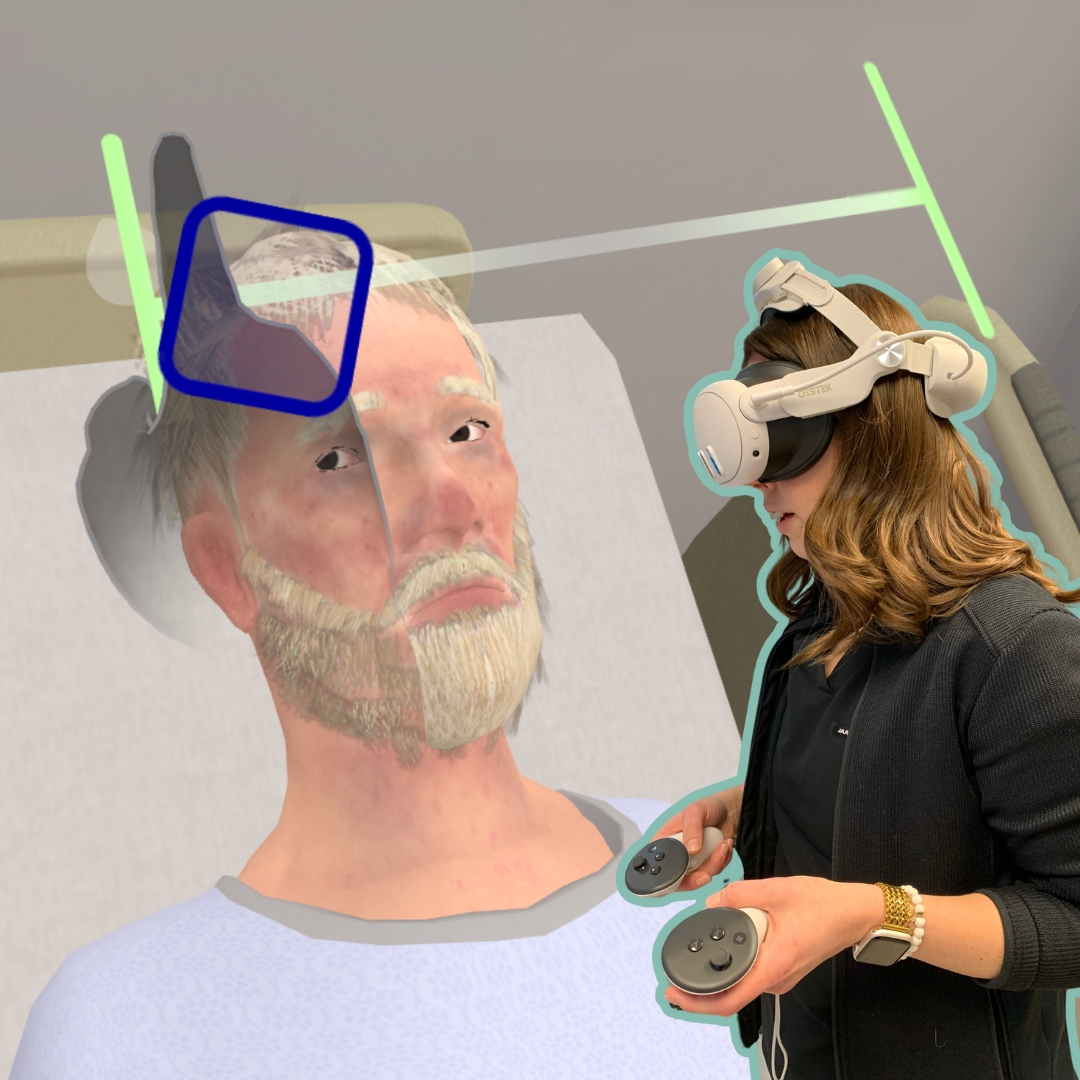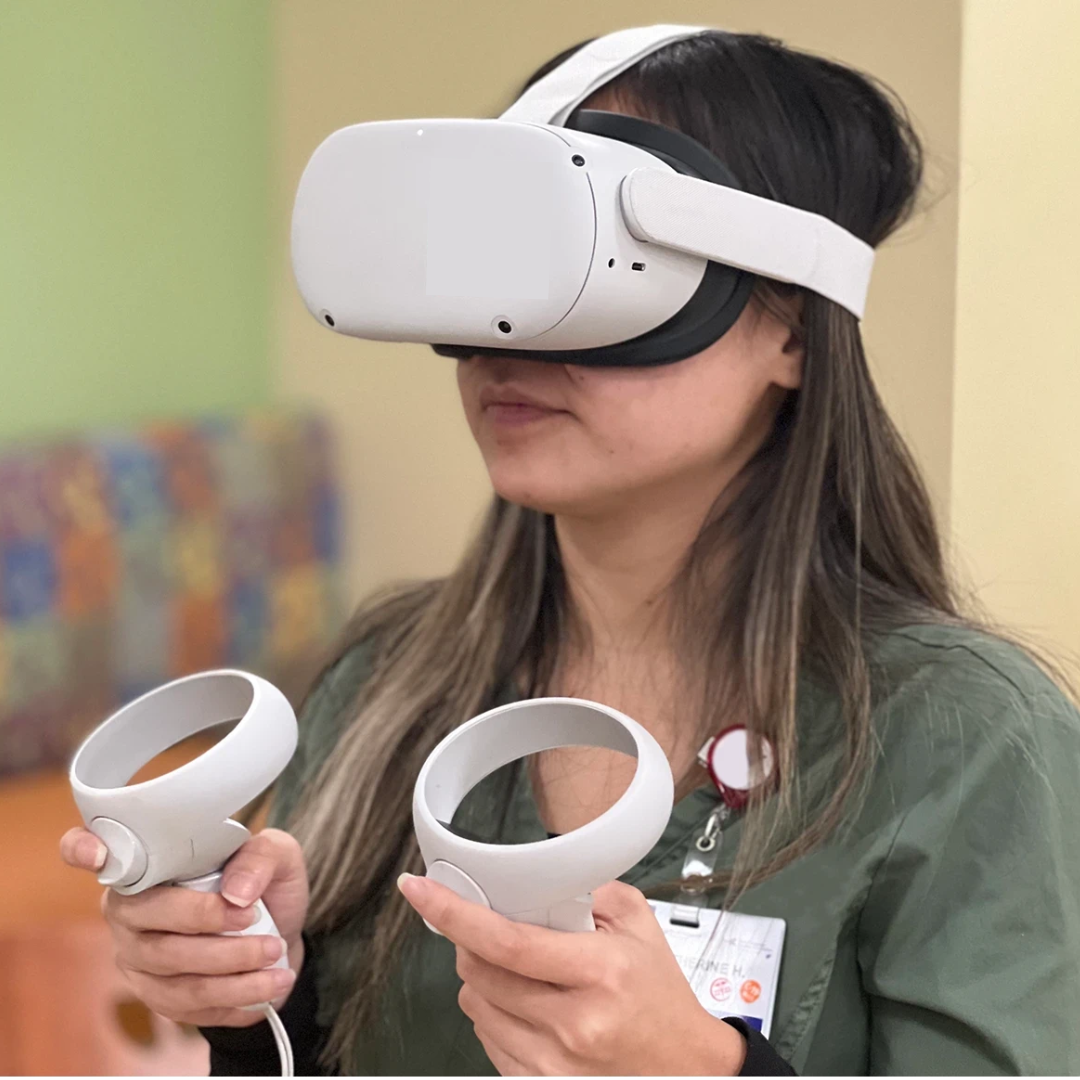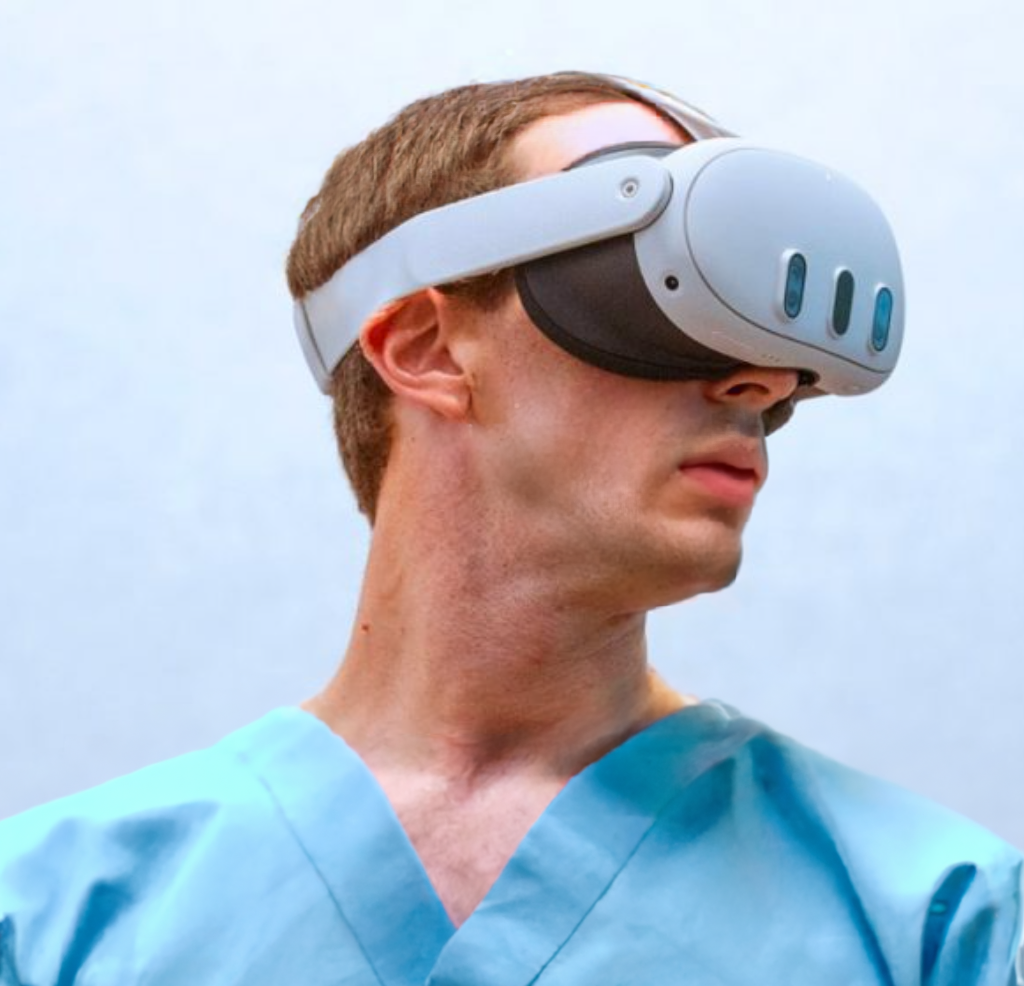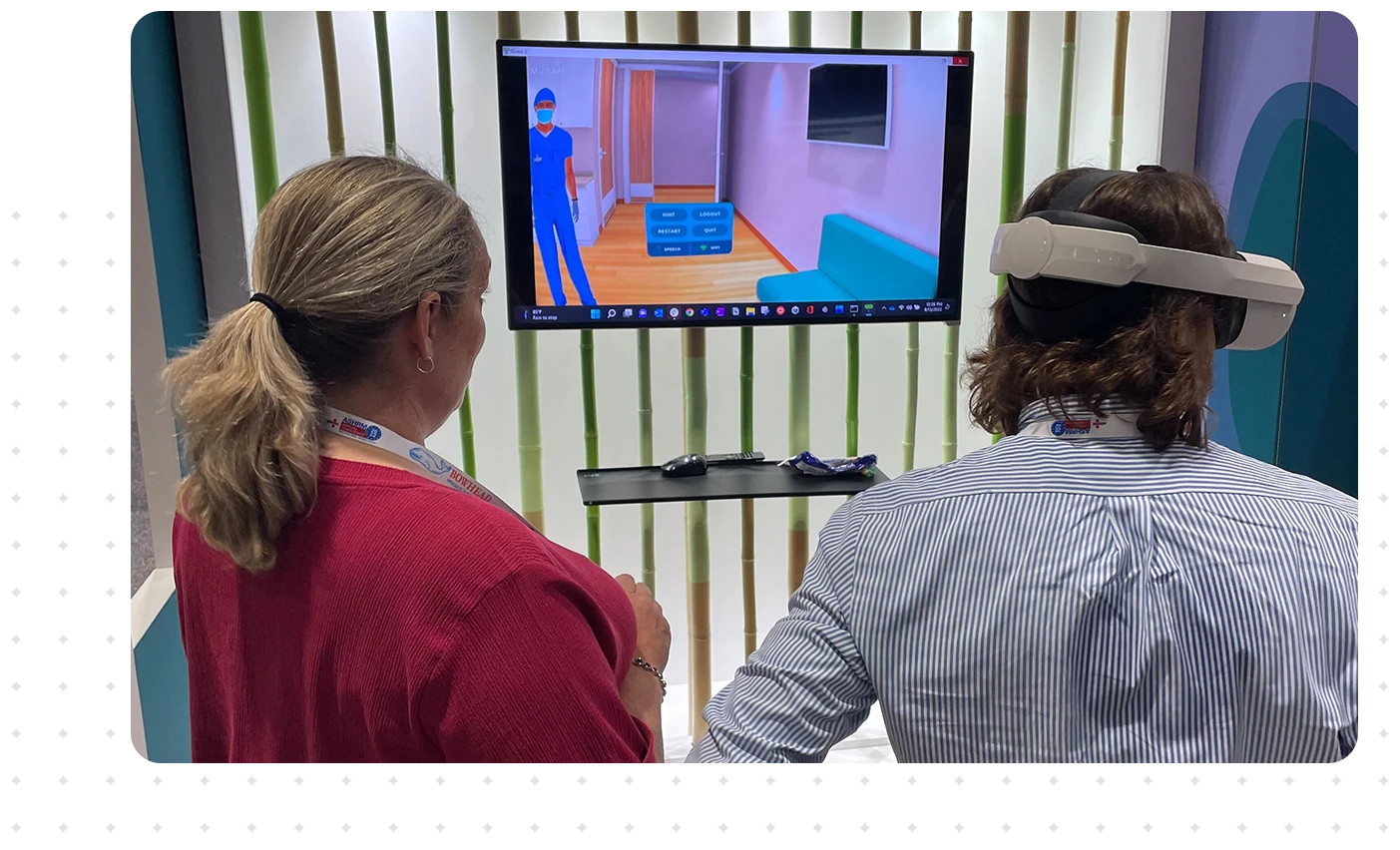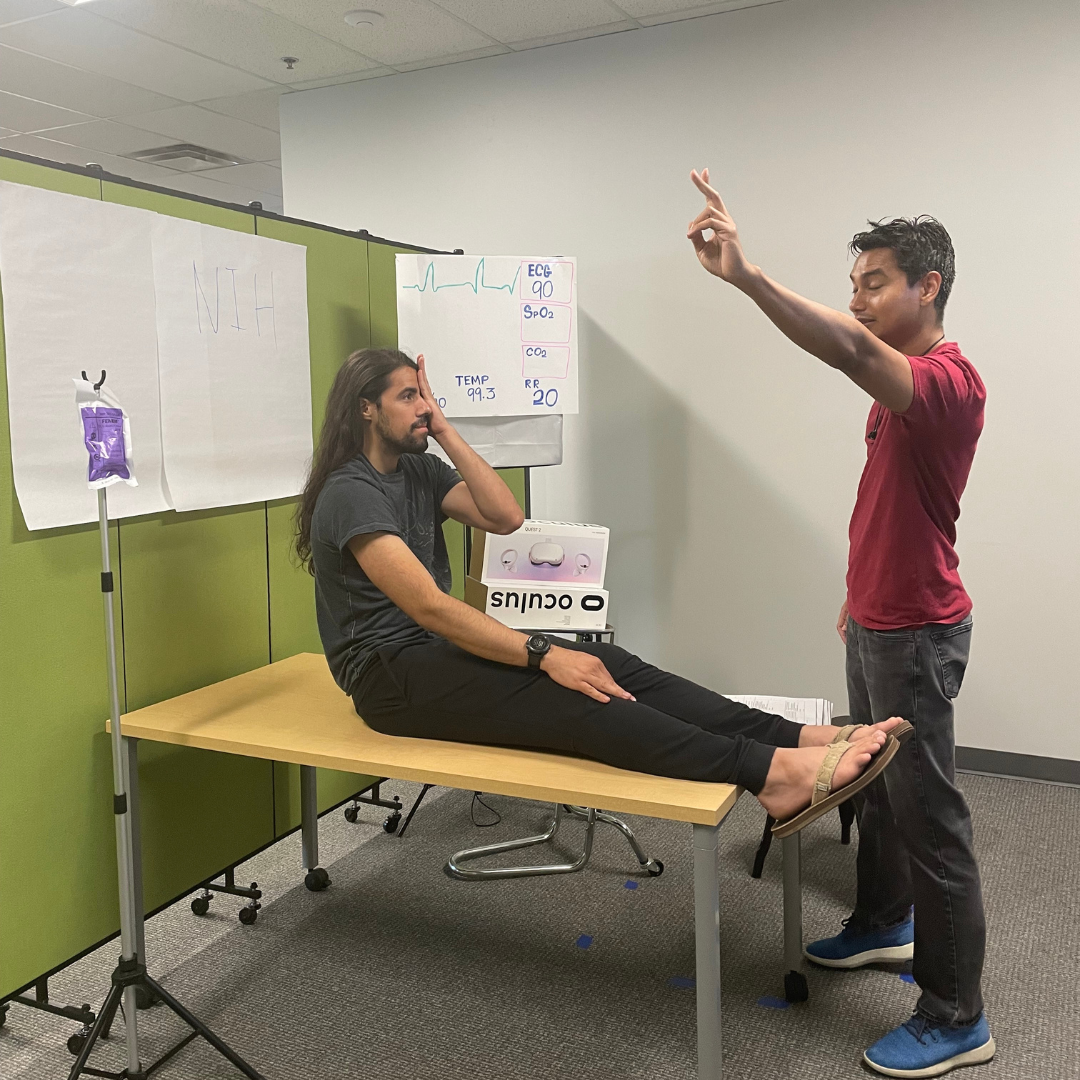
Paper Prototyping: An Essential First Step to Creating High-Quality Healthcare VR Applications
Published March 17, 2023
Virtual reality transforms healthcare training by providing a highly realistic and engaging learning experience. At Health Scholars, we’re dedicated to making advanced technology accessible to all, empowering healthcare clinicians to perform at their best.
Our engineering team constantly improves the tools and methodologies used to design and build VR-based healthcare training applications, leading the shift toward more effective and engaging training. One of our critical tools for success is paper prototyping.
What is Paper Prototyping?
Here at Health Scholars, we always begin by “paper prototyping” our VR simulation before embarking on the development. A paper prototype aims to quickly test and refine ideas and concepts before committing to a full-fledged product. By starting with a paper prototype, we identify and address potential issues early in the process, streamlining the development and saving time and resources.
Typically, this design process involves creating a low-fidelity representation of the product using simple materials like sticky notes and paper cutouts. However, the type of applications we build adds some challenges, given the complexity of healthcare training. On top of that, we leverage both VR and voice-recognition technology which opens up many ways to interact with the application outside of the traditional mouse and keyboard inputs.
Paper Prototyping In Action
When we developed our Stroke Assessment Course, we collaborated with healthcare experts and designers to create a list of the clinician tools and non-player characters (NPCs) required for the assessment. Given that VR operates in 3D space, it’s essential to determine the proper placement of these elements in the simulated room. To bring this to life, we set up a real-world room and used boxes to represent the equipment, just as it would appear in the simulation.
Next, we acted out the user and patient interactions in real time, getting a sense of the movements and interactions during the training. We mimic these interactions as closely as possible to how they will occur in the VR simulation and gather feedback from designers and developers on their complexity. In our case, this includes using voice commands and interacting with the environment through hand movements. This paper prototyping process allows us to quickly and easily test and refine our ideas and ensure that our VR simulations meet the highest standards of quality and accuracy.
Using this version of paper prototyping, we established a foundation for our VR simulations that helps identify and address potential issues before they become a problem and ensures an engaging and effective application flow. This approach is critical to delivering the best possible training experience for healthcare clinicians and demonstrates our commitment to continuous improvement and positive outcomes for our users.
Initial setup of our Stroke room.
Acting out Stroke interactions.
Preview of the interactions on our Stroke assessment application.
3 Benefits of Paper Prototyping Healthcare VR Applications
Paper prototyping is a powerful tool that allows us to rapidly iterate and refine our healthcare VR applications. Through this process, we have realized several benefits that have proven critical to the success of our programs.
Collaboration with Clinicians
We work closely with medical professionals to ensure that our VR simulations are highly realistic, immersive, and clinically accurate.
Their input and real-world experience allow us to develop highly complex healthcare training and understand what our users should look for as they handle medical emergencies.
Immersive Element Evaluation
Our VR simulations are designed to be as realistic as possible, incorporating the latest advancements in VR technology. However, we also understand the importance of allowing users to focus on training.
We often ask ourselves, “Do we need this to assess the patient properly?” or “Is it essential for our user to be able to do this interaction?” Introducing additional equipment or interaction may better mimic a real-life environment but can end up distracting or even hindering the goal of the training.
Real-Time Design Iteration
By having our stakeholders together in these sessions and running through the scenarios from start to end, we can test out and verify updates on the spot.
We get everyone on the same page regarding the objectives and rapidly iterate on everyone’s feedback and concerns, ensuring that the application meets the highest standards of quality and accuracy throughout the development cycle.
The New Standard in Healthcare Training
As engineers, our dedication to continuous improvement drives us to build and refine the tools used in developing virtual reality applications. We aim to make it easier for healthcare providers to quickly design and verify their training solutions, empowering clinicians to confidently handle critical, high-pressure situations.
Paper prototyping has proven a valuable tool in our design process, allowing for rapid iteration and ongoing refinement of our simulations. And the Health Scholars team regularly explores new methods to enhance and streamline the paper prototyping process to make the training simulation development even more efficient.
We are proud to set a new standard in healthcare training, and our commitment to innovation, quality, and effective development positively impacts patients everywhere.
Ready to start a conversation on how Health Scholars nurtures experience and grows confidence in your clinicians? Let’s get in touch.

